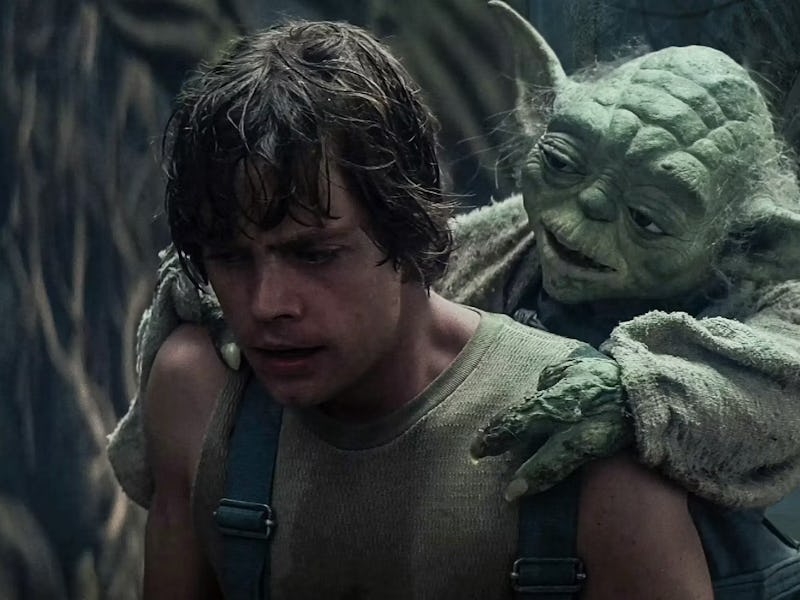The Acolyte Could Set Up the Trippiest Moment of The Empire Strikes Back
The allegory of the cave... of evil.

No hero’s story is complete without a training sequence, and Star Wars contains one of the greatest ever. When Luke meets Yoda on Dagobah, he gets in shape by toting the Jedi Master around and working on his connection with the Force. Notably, his mental state is also challenged. In a key scene, Yoda sends Luke into the Cave of Evil, where he’s confronted by a terrifying vision that foreshadows his connection to Darth Vader.
But just how does a cave become evil? There have been several explanations, but a non-canon comic could provide a tidy origin story, and let The Acolyte show the intriguing tale over a century before Luke arrives in Dagobah.
Modern Star Wars canon has told us a little about the Cave of Evil, also called the Dark Side Cave. Thanks to the “Voices” episode of The Clone Wars, we know Yoda visited the planet to commune with the Force ghost of Qui-Gon, who called Dagobah “one of the purest places in the galaxy.” And in From a Certain Point of View: The Empire Strikes Back, a short story is written from the perspective of the cave itself, or rather the Force vergence — a place where the Force is unusually strong — that inhabits it.
Lost Legends is an Inverse series about the forgotten lore of our favorite stories.
Could Dagobah appear in The Acolyte?
Before Star Wars introduced Force vergences, there were Dark Side nexuses, places that hosted powerful Dark Side energy. In the now non-canon comic Star Wars Tales #16, there’s an entire storyline about the cave’s origins. Entitled “Heart of Darkness,” it depicted a young Yoda-like character named Minch as he battles a Dark Jedi from the humanoid Bpfasshi species.
Originally, Minch was assumed to be Yoda himself, as “Minch” was Yoda’s first name in early drafts of The Empire Strikes Back. But the Minch of the comics is a different character, one who proudly proclaims, “Size matters not!” during his duel. Then, in a real “Would you rather fight a horse-sized duck or 100 duck-sized horses?” situation, the Dark Jedi (the old, non-canon equivalent to the Sith) embraces this philosophy and uses the Force to divide into dozens of action-figure-sized versions of himself.
Minch is still able to defeat the Dark Master, and the comic foreshadows the later significance of the Dark Side Cave created by their duel. “A new place of power,” it says, “anointed with the sweat of the just and the blood of the wicked, is founded.”
The Bpfasshi Dark Jedi attempts to divide and conquer in Star Wars Tales #16, published in 2003.
With The Acolyte introducing a relentless Sith assassin a century before the prequel trilogy, could this origin story be replicated in modern canon? It’s possible the final confrontation between Mae, the Dark Side user, and Sol, the Jedi seeking her out, could bring them both to the powerful vergence that already exists in Dagobah. A good assassin needs a hideout, and an unassuming swamp planet seems as good a place as any.
And if that’s where Mae ultimately dies, it could imbue the cave with the Dark Side energy that influences Luke’s future visions. Qui-Gon may have said the planet is one of the “purest places in the galaxy,” but the Force is balanced, and clearly all of Dagobah’s goodness has a counterpart in the cave’s evil. That evil has to come from somewhere. Why not Mae?
The Acolyte is the furthest Star Wars has ventured from the original trilogy’s canon on-screen. That gives it the freedom to create an entirely new version of galactic drama, but it also provides opportunities for the DNA of the original Star Wars to shine through. What better way to incorporate one of Star Wars’ most mystical locations and seed one of the coolest scenes in the original trilogy than to show that, in this galaxy, the Force really does run through everything?